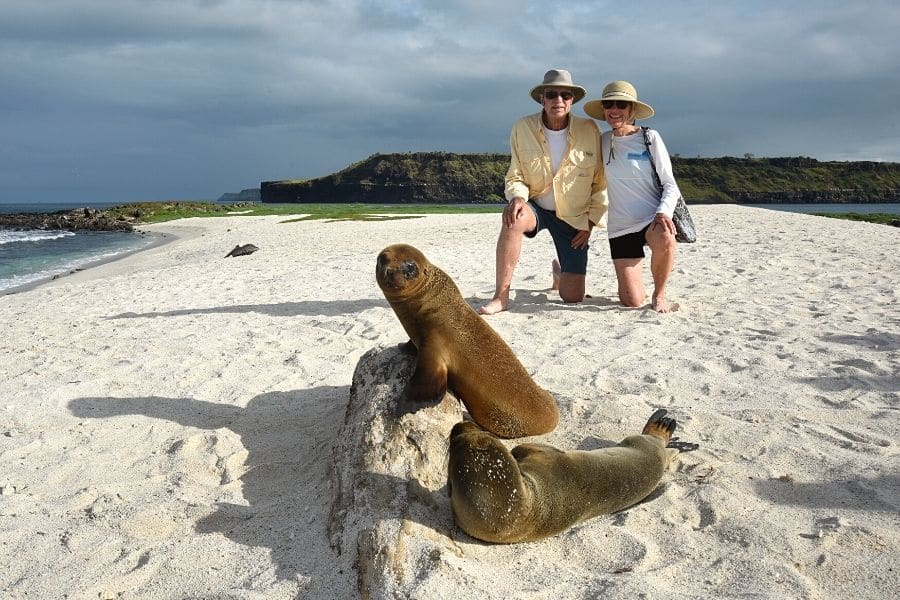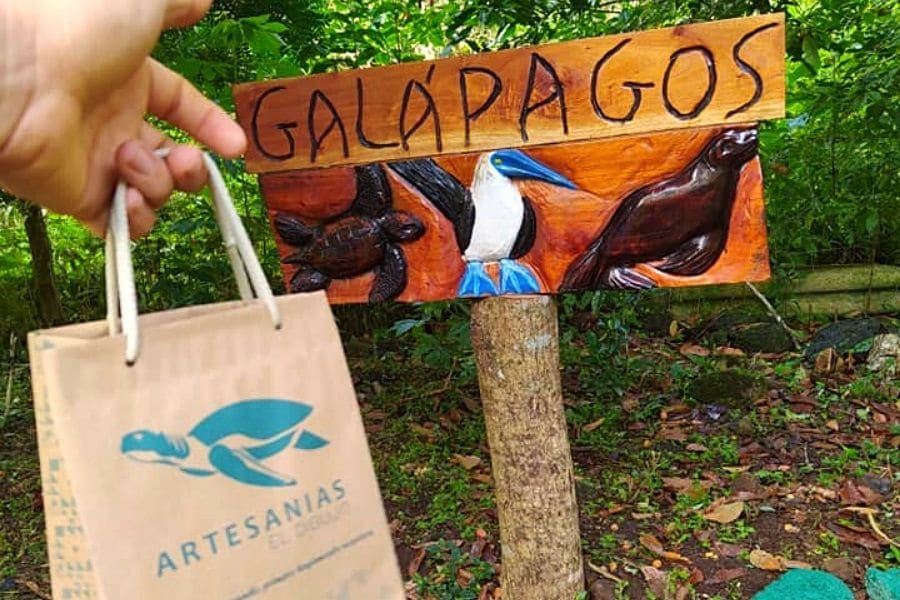3 Tips for a Galapagos Responsible Travel
Stay up to date with our most recent news and updates
A trip to the remote and heavenly Galapagos archipelago is without a doubt one of those things that you must do at least once in your life.
In this wonderful place you can enjoy unforgettable landscapes of volcanic origin, white sand beaches bathed by turquoise waters and unique species of flora and fauna unique in the world.
Traveling as a family, with friends or alone is a great opportunity to learn more about nature in this incredible “living laboratory”, and as if that was not enough, you can also contribute to its conservation by traveling responsibly.

Senior travelers meet baby sea lions in the Galapagos Islands.
As you have seen, Galapagos is a place that we must take care of, and that is why we want to share with you 3 tips for you to make your Galapagos trip more responsible.
1. Plan your trip responsibly.
A trip to the Galapagos Islands will probably be different from any other trip you have taken before, as you will be about to visit a true wildlife sanctuary. This famous archipelago is considered one of the best-preserved ecosystems in the planet.
Here are some recommendations to help you plan your responsible trip to Galapagos.
- Book a hotel or cruise ship that has an ecological certification. You can find several options available.
- If you decide to take a cruise, our ideal recommendation is a 16-passenger cruise. They are very comfortable, safe, and have efficient ecological processes to reduce CO2 emissions. Known more, clicking here.
- Avoid packing single-use plastics, try to carry an aluminum bottle to fill water with you, to help reduce the pollution of the seas.
You might be interested: AIR CONNECTIVITY & EXTRA EXPENSES FOR A GALAPAGOS TRIP.
2. During your visit, contribute with the Galapagos conservation.
The Galapagos Islands have a fragile ecosystem, and it is, therefore, the responsibility of both locals and visitors to promote its conservation through simple actions. Learn about them below.
- More than 95% of the land area of the Galapagos archipelago is considered a protected area, and for this reason, there are several rules for its care that you must respect.
- Avoid generating waste, and if you have no other option, try to separate it very well between paper, plastic, glass, and organic waste. In this way, you will be supporting the permanent recycling campaign of the Galapagos Islands.
- Follow the rule of keeping a distance of at least 2 meters from the animal species, since any involuntary action could generate an irreversible change in its behavior.
- Remember not to remove any element of the ecosystem, everything must remain as you found it.
You might be interested: WHAT TO PACK FOR A GALAPAGOS TRIP?.
3. Support the Galapagos local economy.
During your visit to the main inhabited islands, such as Santa Cruz, San Cristóbal, Floreana and Isabela, you will be able to support the local economy. From buying some souvenirs to taking a cruise to explore the most remote islands of the archipelago.

The purchase of handicrafts supports the local economy of the Galapagos Islands.
Here are some ways to do it:
- You can support small artisans by buying some handmade souvenirs.
- Tasting the local gastronomy during your visit is also a way to support the locals.
- During a cruise, you can also contribute to the local economy since most of the crew members are locals.
To conclude this short article, remember that it is possible to have an incredible trip in the Galapagos Islands while contributing to the care of its fragile ecosystem and at the same time supporting the locals.
LIVE THE EXPERIENCE!
📌 Discover our best deals, to the Galapagos Islands! Click here.
If you liked this post, share it with your friends and subscribe to our newsletter to keep up to date with interesting news from Galapagos 🐢, Ecuador 🇪🇨 , and other magical tourist destinations in South America 🌎.
RELATED POST
Galapagos Hope for the Future
Stay up to date with our most recent news and updatesLast Thursday, December 12, the premiere of...
New York closer to Galapagos
According to the Saber Market Intelligence statistical studies, the O&D (Origin and Destination) demand between New York and Ecuador was more than…



